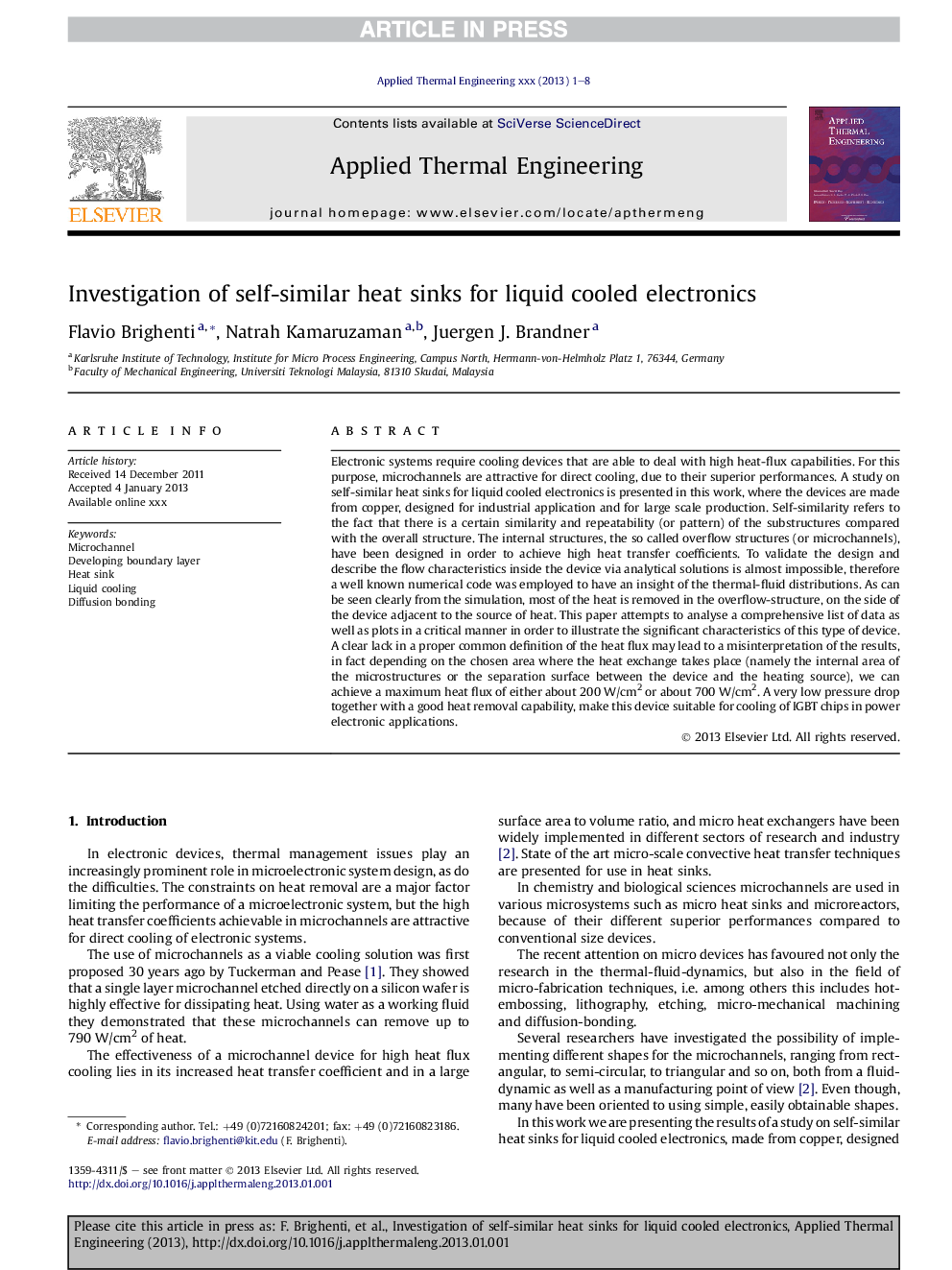| Article ID | Journal | Published Year | Pages | File Type |
|---|---|---|---|---|
| 7050166 | Applied Thermal Engineering | 2013 | 8 Pages |
Abstract
Electronic systems require cooling devices that are able to deal with high heat-flux capabilities. For this purpose, microchannels are attractive for direct cooling, due to their superior performances. A study on self-similar heat sinks for liquid cooled electronics is presented in this work, where the devices are made from copper, designed for industrial application and for large scale production. Self-similarity refers to the fact that there is a certain similarity and repeatability (or pattern) of the substructures compared with the overall structure. The internal structures, the so called overflow structures (or microchannels), have been designed in order to achieve high heat transfer coefficients. To validate the design and describe the flow characteristics inside the device via analytical solutions is almost impossible, therefore a well known numerical code was employed to have an insight of the thermal-fluid distributions. As can be seen clearly from the simulation, most of the heat is removed in the overflow-structure, on the side of the device adjacent to the source of heat. This paper attempts to analyse a comprehensive list of data as well as plots in a critical manner in order to illustrate the significant characteristics of this type of device. A clear lack in a proper common definition of the heat flux may lead to a misinterpretation of the results, in fact depending on the chosen area where the heat exchange takes place (namely the internal area of the microstructures or the separation surface between the device and the heating source), we can achieve a maximum heat flux of either about 200Â W/cm2 or about 700Â W/cm2. A very low pressure drop together with a good heat removal capability, make this device suitable for cooling of IGBT chips in power electronic applications.
Related Topics
Physical Sciences and Engineering
Chemical Engineering
Fluid Flow and Transfer Processes
Authors
Flavio Brighenti, Natrah Kamaruzaman, Juergen J. Brandner,
